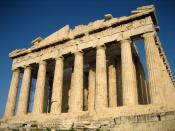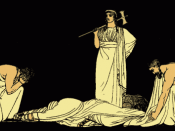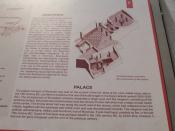Aeschylus was born in Eleusis, a Greek town near Athens, in 525 B.C. He was the first of the great Greek tragedians, preceding both Sophocles and Euripides, and is often credited with inventing tragic drama. Prior to Aeschylus, plays were primitive, consisting of a single actor and a chorus offering commentary. In his works, he added a "second actor" (often more than one) thus creating endless new dramatic possibilities. He lived until 456 B.C., fighting in the wars against Persia, and attaining great acclaim in the world of the Athenian theater.
Aeschylus wrote nearly ninety plays; however, only seven have survived to the modern era, including such famous works as Prometheus Bound and The Seven Against Thebes. Agamemnon is the first of a trilogy, called the Oresteia, which continues with The Libation-Bearers and concludes with The Eumenides. The trilogy--the only such work to survive from Ancient Greece--is considered by many critics to be the greatest Athenian tragedy ever written, both for the power of its poetry and the strength of its characters.
Agamemnon depicts the assassination of the title character by his wife, Clytemnestra, and her lover; The Libation-Bearers continues the story with the return of Agamemnon's son, Orestes, who kills his mother and avenges his father.
Orestes is pursued by the Furies in punishment for his matricide, and finally finds refuge in Athens, where the god Athena relieves him of his persecution.
The events of Agamemnon take place against a backdrop that would have been familiar to an Athenian audience. Agamemnon is returning from his victory at Troy, which Palmieri 2 has been besieged for ten years by Greek armies attempting to recover Helen, Agamemnon's brother's wife, stolen treacherously by the Trojan Prince, Paris.
(The events of the Trojan War are recounted in Homer's Iliad.) The play's tragic events...


